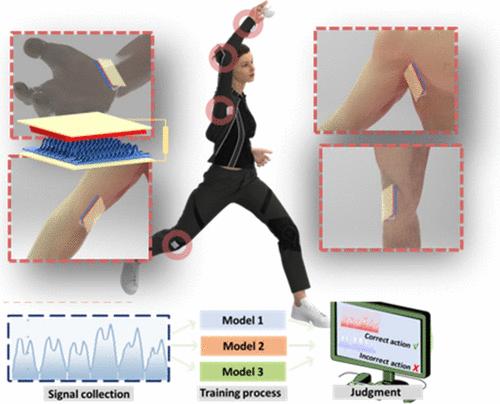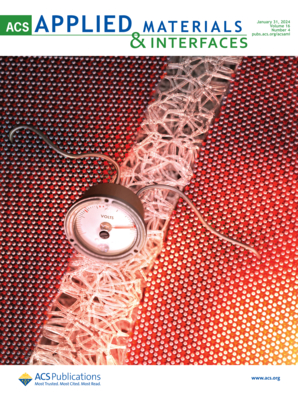3D Bristle-Structured, Knitted-Fabric-Based Triboelectric Sensors for Machine Learning-Based Motion Recognition
IF 8.3
2区 材料科学
Q1 MATERIALS SCIENCE, MULTIDISCIPLINARY
引用次数: 0
Abstract
With the development of electronic technology, triboelectric-based sensors have been widely researched in fields such as healthcare, rehabilitation training, and sports assistance due to their manufacturing convenience and self-powering advantages. Among them, 3D fabric-based triboelectric sensors not only possess advantages such as easy mechanized production, good breathability, and ease of wearing but also their unique 3D structure enhances the specific surface area, thereby amplifying the sensitivity. This study proposes a 3D bristle-structured fabric made by a digital knitting technology that has not been studied widely for triboelectric devices. By applying the 3D bristle structure with a large specific surface area to the single jersey fabric, the effective contact area during friction can be increased, resulting in a higher surface charge density. Additionally, the microcapacitor-like effect provided by the numerous microstructures allows the device to store more surface charge, further improving the output performance. The study systematically investigates the output performance of four different structures assembled by single jersey and 3D bristle-structured fabrics. The optimal sample exhibits a 57% higher output voltage than that of the reference 2D fabric sample. The 3D bristle-structured fabric demonstrates linear high sensitivity and distinct output performance when used as a sensor. Finally, a machine learning integration is applied to judge motion to assist a baseball pitcher in a self-training system.

基于机器学习的运动识别三维鬃毛结构针织织物三电传感器
随着电子技术的发展,基于三电技术的传感器因其制造方便、自供电等优势,在医疗保健、康复训练和运动辅助等领域得到了广泛研究。其中,基于三维织物的三电传感器不仅具有易于机械化生产、透气性好、便于佩戴等优点,而且其独特的三维结构还能增大比表面积,从而提高灵敏度。本研究提出了一种三维鬃毛结构织物,这种织物是通过数字针织技术制成的,目前还没有针对三电设备的广泛研究。通过在单面织物上应用具有较大比表面积的三维鬃毛结构,可以增加摩擦时的有效接触面积,从而提高表面电荷密度。此外,大量微结构带来的类似微电容的效果可使设备存储更多的表面电荷,从而进一步提高输出性能。该研究系统地考察了由单面织物和三维鬃毛结构织物组装而成的四种不同结构的输出性能。最佳样品的输出电压比参考的二维织物样品高出 57%。三维鬃毛结构织物在用作传感器时表现出线性高灵敏度和独特的输出性能。最后,将机器学习集成应用于运动判断,以在自我训练系统中协助棒球投手。
本文章由计算机程序翻译,如有差异,请以英文原文为准。
求助全文
约1分钟内获得全文
求助全文
来源期刊

ACS Applied Materials & Interfaces
工程技术-材料科学:综合
CiteScore
16.00
自引率
6.30%
发文量
4978
审稿时长
1.8 months
期刊介绍:
ACS Applied Materials & Interfaces is a leading interdisciplinary journal that brings together chemists, engineers, physicists, and biologists to explore the development and utilization of newly-discovered materials and interfacial processes for specific applications. Our journal has experienced remarkable growth since its establishment in 2009, both in terms of the number of articles published and the impact of the research showcased. We are proud to foster a truly global community, with the majority of published articles originating from outside the United States, reflecting the rapid growth of applied research worldwide.
 求助内容:
求助内容: 应助结果提醒方式:
应助结果提醒方式:


